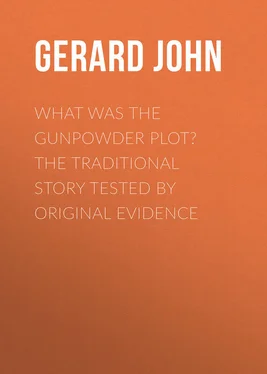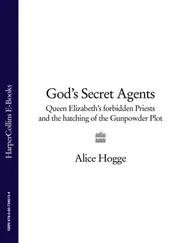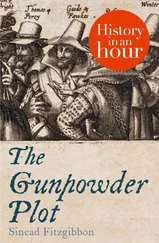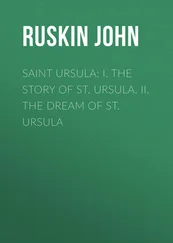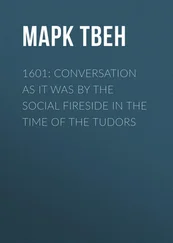John Gerard - What was the Gunpowder Plot? The Traditional Story Tested by Original Evidence
Здесь есть возможность читать онлайн «John Gerard - What was the Gunpowder Plot? The Traditional Story Tested by Original Evidence» — ознакомительный отрывок электронной книги совершенно бесплатно, а после прочтения отрывка купить полную версию. В некоторых случаях можно слушать аудио, скачать через торрент в формате fb2 и присутствует краткое содержание. Жанр: foreign_antique, foreign_prose, на английском языке. Описание произведения, (предисловие) а так же отзывы посетителей доступны на портале библиотеки ЛибКат.
- Название:What was the Gunpowder Plot? The Traditional Story Tested by Original Evidence
- Автор:
- Жанр:
- Год:неизвестен
- ISBN:нет данных
- Рейтинг книги:5 / 5. Голосов: 1
-
Избранное:Добавить в избранное
- Отзывы:
-
Ваша оценка:
- 100
- 1
- 2
- 3
- 4
- 5
What was the Gunpowder Plot? The Traditional Story Tested by Original Evidence: краткое содержание, описание и аннотация
Предлагаем к чтению аннотацию, описание, краткое содержание или предисловие (зависит от того, что написал сам автор книги «What was the Gunpowder Plot? The Traditional Story Tested by Original Evidence»). Если вы не нашли необходимую информацию о книге — напишите в комментариях, мы постараемся отыскать её.
What was the Gunpowder Plot? The Traditional Story Tested by Original Evidence — читать онлайн ознакомительный отрывок
Ниже представлен текст книги, разбитый по страницам. Система сохранения места последней прочитанной страницы, позволяет с удобством читать онлайн бесплатно книгу «What was the Gunpowder Plot? The Traditional Story Tested by Original Evidence», без необходимости каждый раз заново искать на чём Вы остановились. Поставьте закладку, и сможете в любой момент перейти на страницу, на которой закончили чтение.
Интервал:
Закладка:
"Gentlemen not accustomed to labour or to be pioneers." – Goodman, Court of King James , p. 103.
145
"The Moles that first underwent these underminings were all grounded Schollers of the Romish Schoole, and such earnest Labourers in their Vault of Villany, that by Christmas Eve they had brought the worke under an entry, unto the Wall of the Parliament House, underpropping still as they went the Earth with their framed Timber." – Speed, Historie , p. 1232 (pub. 1611).
146
In Barlow's Gunpowder Treason these foundations are stated to have been three ells thick, i. e. , eleven and a quarter feet. Harleian Miscellany , iii. 122.
147
See Appendix F, The enrolment of the Conspirators , for the discrepancies as to dates. T. Winter (November 23rd, 1605) says that the powder was laid "in Mr. Percy's house;" Faukes, "in a low Room new builded."
148
There is, as usual, hopeless contradiction between the two witnesses upon whom, as will be seen, we wholly depend for this portion of the story. Faukes (November 17th, 1605) makes the mining operations terminate at Candlemas. T. Winter (November 23rd) says that they went on to "near Easter" (March 31st). The date of hiring the "cellar," was about Lady Day (March 25th).
149
The buildings of the dissolved College of St. Stephen, comprising those around the House of Lords, were granted by Edward VI. to Sir Ralph Lane. They reverted to the crown under Elizabeth, and were appropriated as residences for the auditors and tellers of the Exchequer. The locality became so populous that in 1606 it was forbidden to erect more houses.
150
Jardine, Gunpowder Plot , p. 48.
151
November 17th, 1605.
152
November 7th, 1605.
153
Winter says: "… We heard that the Parliament should be anew adjourned until after Michaelmas; upon which tidings we broke off both discourse and working until after Christmas" (November 23rd, 1605).
Lingard writes, "When a fortnight had thus been devoted to uninterrupted labour, Faukes informed his associates that the Parliament was prorogued from the 7th of February to the 3rd of October. They immediately separated to spend the Christmas holidays at their respective homes." — History , vii. 47 (ed. 1883).
154
Faukes, as has been said, makes the work upon the wall terminate at Candlemas. Winter ( ut sup. ) says that they brought over the powder at Candlemas, that is, after they had been some time engaged upon the wall, and found the need of the assistance of Keyes.
155
Lord's Journals "Ao 1604(5) 2 Jac. – Memorandum quod hodierno die, septimo die Februarii, Ao Regis ñri Jacobi, viz. Angliae (etc.) 2ndo, & Scotiae 38o, in quem diem prorogatum fuerat hoc praesens parliamentum, convenere Proceres tam Spirituales quam Temporales, quorum nomina subscribuntur."
Then follow twenty-nine names, including the Archbishop of Canterbury, Lords Ellesmere ( Chancellor ), Dorset ( Treasurer ), Nottingham ( Admiral ), Suffolk ( Chamberlain ), Northumberland, Cranborne (Cecil), Northampton, etc. It is noted "Lords Montagu, Petre, and Gerard [all three Catholics] were present, though they were none of the Commissioners."
156
Narrative (Stonyhurst MSS.), fol. 44 b.
157
This absurd supposition is obviously implied by Faukes (November 17th, 1605), and T. Winter (November 23rd), in the only two accounts furnished by any of the conspirators wherein the episode of the mine is mentioned. In Barlow's Gunpowder Treason ( Harleian Miscellany , iii. 123) it is expressly stated that the confederates "came to the knowledge of the vault" only on the occasion now detailed. Tierney says (Dodd's Church History , iv. 45, note): "At this moment an accidental noise … first acquainted them with the existence of the cellar."
158
On the 3rd of October following, Thomas Winter was sent to be present at the ceremony of prorogation, and to watch the demeanour of the assembled peers.
159
Gunpowder Plot , p. 55. This account is based almost entirely on that of Faukes, November 17th, 1605.
160
In his Italian version of Father Gerard's history, Father Greenway interpolates the following note: "Questi non erano carboni di legno, ma una sorte di pietra negra, la quale come carbone abrugia et fa un fuogo bellissimo et ottimo" (fol. 44 b).
161
"These Pioneers through Piercies chamber brought
Th' exhausted earth, great baskets full of clay;
Thereby t' have made a mighty concave vau't,
And of the house the ground worke tooke away:
But then at last an obstacle they finde,
Which to remove proud Piercy casts in 's mind.
A thick stone wall their passage then did let;
Whereby they cou'd not finish their intent.
Then forthwith Piercy did a sellar get,
Under that sacred house for yearly rent:
Feigning to fill 't with Char coal, Wood, & Beere,
From all suspect themselves to cloake & cleere."
This remarkable poem, published 1617, is a much expanded translation of Pietas Pontificia (in Latin hexameter verse) by Francis Herring, which appeared in 1606.
162
On this point we are furnished with more than the usual amount of variety as to details. Cecil, writing to the ambassadors (Cornwallis, Edmondes, etc.), says there were "two hodgsheads and some 30 small barrels." The King's Discourse mentions 36 barrels. Barclay ( Conspiratio Anglicana ) says there were over 9,000 lb. of powder, in 32 barrels, and that one of extra size had been placed under the throne, for treason could not without dread assail Majesty even when unarmed. The indictment of the conspirators named 30 barrels and 4 hogsheads. Sir E. Coke always said 36 barrels. Barlow's Gunpowder Treason makes the extraordinary statement, frequently reproduced, that "to the 20 Barrels of Powder laid in at first, they added in July 20 more, and at last made up the number Thirty-six." Faukes (November 5th) said that of the powder "some was put in hoggesheads, some in Barrels, and some in firkins." Faukes also says that the powder was conveyed to the place in hampers. John Chamberlain, writing to Dudley Carleton, November 7th, 1605, says it was carried in satchels. Barlow ( ut sup. ) quotes the amount as 9,000 or 10,000 lb.
163
November 23rd, 1605.
164
The Gunpowder Plot , by L., 1805. It seems highly probable that the "cellar" was used as a public passage.
165
Hugh F. Martyndale, A Familiar Analysis of the Calendar of the Church of England (November 5th). London, Effingham Wilson.
166
Letter to Cornwallis and Edmondes , November 9th, 1605.
167
H.F. Martyndale, ut sup.
168
Letter to the Ambassadors, ut sup.
169
An Advertisement written to a Secretarie , etc. (1592), p. 13.
170
Sir R. Naunton, Fragmenta Regalia (Harleian Miscellany , ii. 106).
171
Интервал:
Закладка:
Похожие книги на «What was the Gunpowder Plot? The Traditional Story Tested by Original Evidence»
Представляем Вашему вниманию похожие книги на «What was the Gunpowder Plot? The Traditional Story Tested by Original Evidence» списком для выбора. Мы отобрали схожую по названию и смыслу литературу в надежде предоставить читателям больше вариантов отыскать новые, интересные, ещё непрочитанные произведения.
Обсуждение, отзывы о книге «What was the Gunpowder Plot? The Traditional Story Tested by Original Evidence» и просто собственные мнения читателей. Оставьте ваши комментарии, напишите, что Вы думаете о произведении, его смысле или главных героях. Укажите что конкретно понравилось, а что нет, и почему Вы так считаете.
